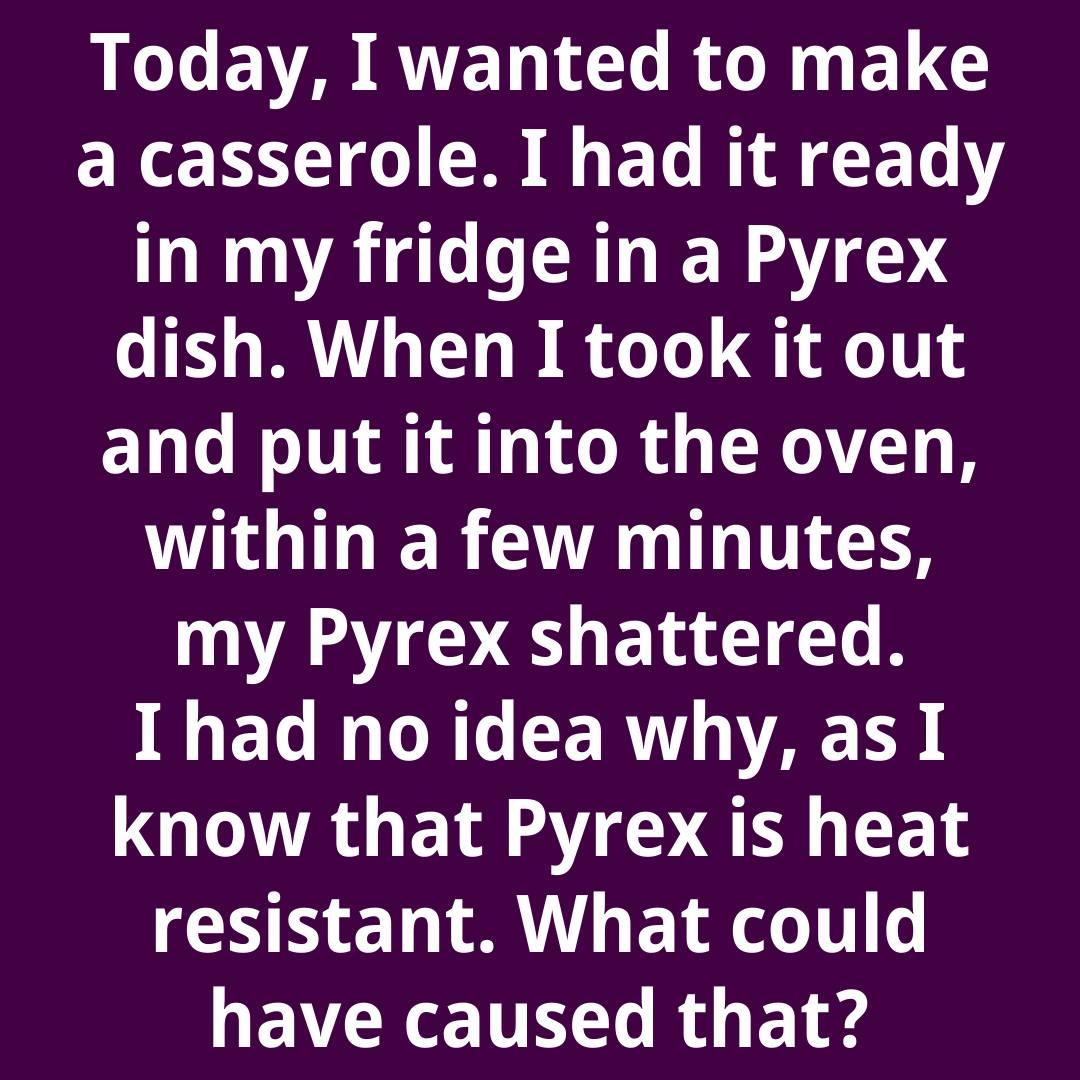Pyrex is one of those kitchen staples that seems to have a permanent place in nearly every American home, whether you inherited a set from Grandma’s cupboard or picked one up as part of a starter kit years ago. These clear glass casserole dishes are the multitaskers of the kitchen, doubling as mixing bowls, baking pans, storage containers, and serving dishes all in one.

They’re known for being sturdy, reliable, and almost indestructible—or so we think. But here’s the truth: while Pyrex is designed to handle the heat of your oven, it isn’t invincible. There are important rules for using it safely, rules that often aren’t printed in bold on the bottom of the dish, and learning them the hard way could mean cleaning up a shattered mess of glass and dinner from the oven floor. First things first, yes, Pyrex is oven-safe. That’s one of its greatest appeals—you can prepare, cook, and store food all in the same dish without dirtying extra pans. However, even the toughest Pyrex dish is still glass, and glass has limitations.
The number one rule to remember is to avoid thermal shock, a sudden, drastic change in temperature that can cause the dish to crack or even explode. Imagine taking a Pyrex pan straight out of the fridge and placing it into a 425-degree oven—the result could be a dangerous and frustrating mess. Glass doesn’t react well to sudden extremes, and Pyrex is no exception. If you want to avoid this disaster, you need to give your dish time to adjust. Let it rest on the counter for 20 to 30 minutes before placing it in a preheated oven, especially if it was cold from the fridge. It doesn’t have to reach full room temperature, but it needs time to lose that icy chill. One thing you should never do is transfer a dish directly from the freezer to a hot oven.
That kind of temperature shock is too intense and almost guaranteed to break the glass, no matter how tough it seems. If you’re cooking something that’s been frozen in Pyrex, let it thaw completely on the counter or in the refrigerator overnight. In a pinch, you can place the dish in a cold oven and let both the dish and oven heat up gradually together, but this method is less than ideal. The same rules apply to older, vintage Pyrex dishes, even the beautiful pastel or floral patterned ones collectors love.
@theferalmomstories Replying to @reynhanhan Read your vessel. #pyrex #pyrexia #fyp #thanksgiving #baking #bakingdish #casserole #baker #kitchentip #foodtok #vintagecookware #mixingbowl ♬ original sound – FeralMom
Decades ago, Pyrex was made from borosilicate glass, which handled temperature changes better than the tempered soda-lime glass used today. Still, neither version is immune to breaking under extreme thermal shock. Treat your vintage Pyrex with care, not only to preserve the dish but also because many of these older pieces are now rare and highly valued. So what should you take away from all this? Pyrex is strong, dependable, and far superior to plastic containers that warp or stain, but it needs proper handling.
Always let dishes rest after coming out of the fridge, never move them from the freezer directly to high heat, and don’t add cold liquids to hot glassware or vice versa. Pyrex can withstand a lot, but pushing it beyond its limits can ruin both your meal and your favorite dish. With a little patience and care, your Pyrex will serve you faithfully for years to come, possibly outlasting many of your other kitchen tools. Just remember that it’s glass, not cast iron, and deserves a little respect in how it’s used. Following these simple guidelines will keep your kitchen safer, your cookware intact, and your dinners deliciously free of unexpected shards of glass.





